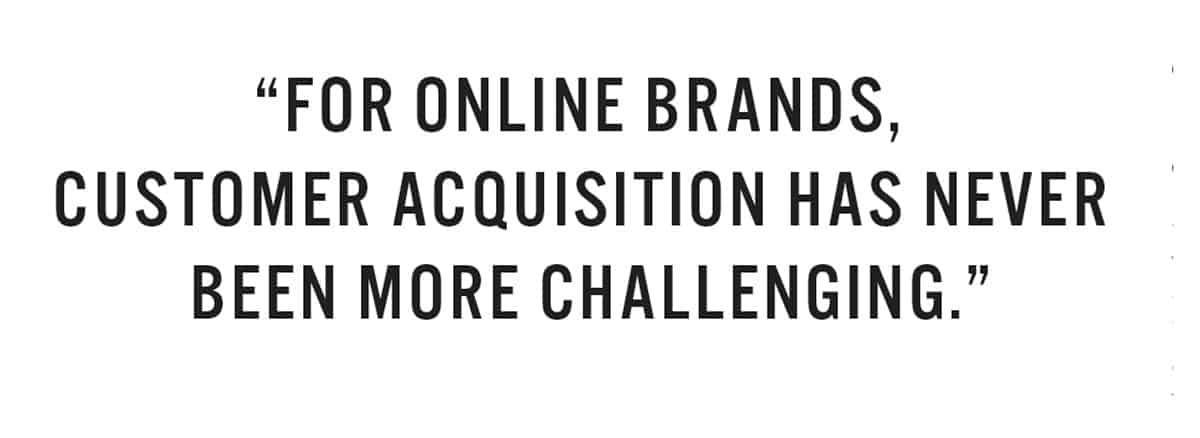THE INTERNET GRASS ISN’T GREENER…ANYMORE

If you haven’t already gotten your copy of MR Magazine’s January 2023 issue, never fear! We’ll be posting every article right here on MR-mag.com over the next week or so. You’ll also be able to pick up a copy at most of the menswear trade shows coming up in January, but be sure that we have your name on our mailing list for future issues by completing the form at the link here.
I’ve been selling menswear on the Internet since 2004.
So think of my perspective on e-commerce in the same way you’d think about how George Washington would be able to discuss American history if he were still alive today. Because I’ve pretty much been here since the e-commerce revolution, and I’ve seen it all.
There was a time when people like me would look at people like you (brick-and-mortar store owners) and think how you guys were dinosaurs. Antiquated. Leaving money on the table by not opening your own e-commerce shop.
And we were right. But not so much anymore.
In the early 2000s, the internet was much like the U.S. was back in the early 1800s. Mostly undiscovered. Undeveloped. Few people occupying the space — either as stores or as consumers.
I was one of the first to build a menswear brand natively online. I was one of the original “disruptors.”
Back then, the big-box department stores didn’t have websites. Or if they did, they were selling a very limited number of SKUs. Brooks Brothers and Jos. A. Bank were barely participating in e-commerce. By the time they all started to bulk up their online offerings and invest in e-commerce infrastructure (2008-2010), they were already years behind native online brands, with a lot of learning still to do.
By then, early online brands like us already understood the e-commerce shopper. We mastered digital marketing. We figured out how to leverage the media to drive traffic and customers to our websites. It was a glorious time.
But things have changed.
For online brands, customer acquisition has never been more challenging and expensive. That’s because digital marketing has become less targeted (via new privacy standards). Customers have become less brand-curious and now everyone and their mother (sometimes literally!) can sell their wares online.
In fact, it’s now believed that it costs less to acquire a new customer through the opening of a brick-and-mortar shop than to acquire a new customer through online advertising — something absolutely unheard of just five years ago. Most native online brands, in order to expand or even survive, need to open at least one or two stores. And yet very few of us can afford to do so.
It’s said that a customer has to see your ad seven times before he simply clicks on your website. Even then, the likelihood of him ordering is just 2 percent. So you can imagine how much money is thrown at marketing before finally landing a new customer.
And without the in-person contact, it’s nearly impossible for online brands to develop a true relationship with the customer. Don’t listen to the noise of building “online communities” and “customer engagement.” Yes, it’s a thing, but it’s nothing compared to what you brick-and-mortar merchants have created with your well-curated stores, special events, and exceptional customer service.
So as 2023 begins and you contemplate going online, my advice is simple: enjoy the grass where you are. It just might be a darker shade of green than ours has become.
Greg Shugar is the owner of Beau Ties of Vermont, an American-made neckwear and accessories company based in Middlebury, Vermont. In 2004, he and his wife founded The Tie Bar, one of the first-ever direct-to-consumer menswear brands. The company was acquired by a private-equity firm in 2013. Greg is also an active investor and teaches entrepreneurship at the Florida Atlantic University School of Business.




As an early online seller having started at the same time as the author of this article, never has a truer article been written.
2023 isn’t the early 2000’s. E-commerce is like the wild west. Customer acquisition is costly and comes with no promise of repeat business. There are no pots of gold at the end of the rainbow anymore. The only thing I would say is the darker shade of green that ours has become will more than likely be barren wasteland for newbies.
Thanks for your information. i am read your article i am very impressive.
Very well stated current state of the customer. I think demographics are driving this as well. Gen z , millenial evolving . Shared experience and human connection coming out of covid as well.